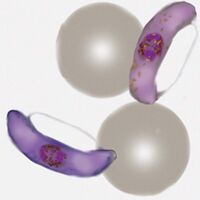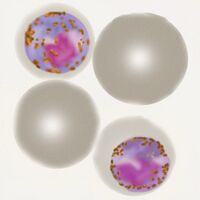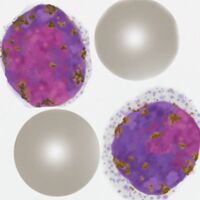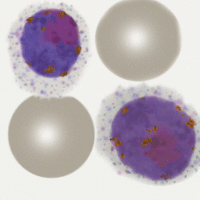Navigation
>Main Malaria Index
>>Malaria Biology Index
>>>Gametocyte Biology
Biology of the Gametocyte
|
The sexual form of the malarial parasite has either male or female form (a higher percentage are female). Generally male gametocytes (microgametocytes) are smaller then the female form (macrogametocytes). They are effectively “dormant” in blood and only develop further when ingested by a mosquito (the temperature drop in the mosquito foregut rapidly activates them to a single female gamete or 8 male gametes (see section on re-infection of the mosquito).
| colspan="1" style = "font-size:100%; color:black; background: gainsboro |
Morphological features and relevance
|
(1) P.falciparum – typically elongated or “banana” shaped forms
(2) P.malariae – typically small and neat rounded forms
(3) P.vivax – typically very large and often irregular
(4) P.ovale – typically sightly enlarged and may be fimbriated
Typical curved gametocyte of P.falciparum
Small "neat" and round gametocytes in P.malariae
Very enarged irregular P.vivax gametocytes
Enlarged forms in P.ovale with fimbriation
→ Click for the clinical gametocyte gallery
| colspan="1" style = "font-size:100%; color:black; background: gainsboro |
Relevance of gametocytes to clinical biology
|
Following treatment of malaria these forms may persist (depending on the nature of the treatment) particularly in the first week but sometimes up to 28 days (unlike the asexual forms that generally disappear more rapidly).
|



